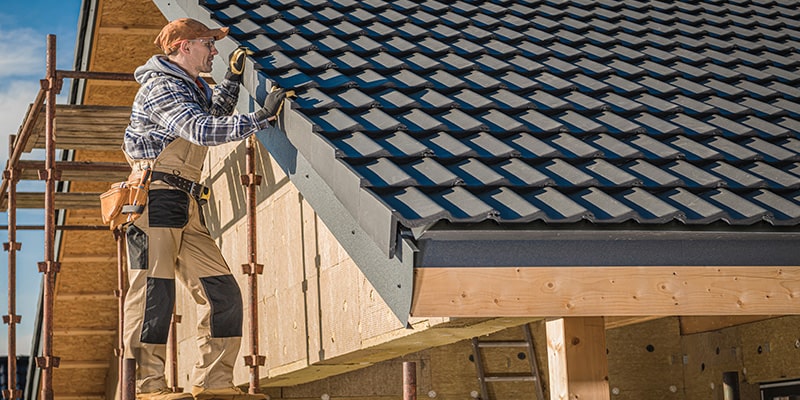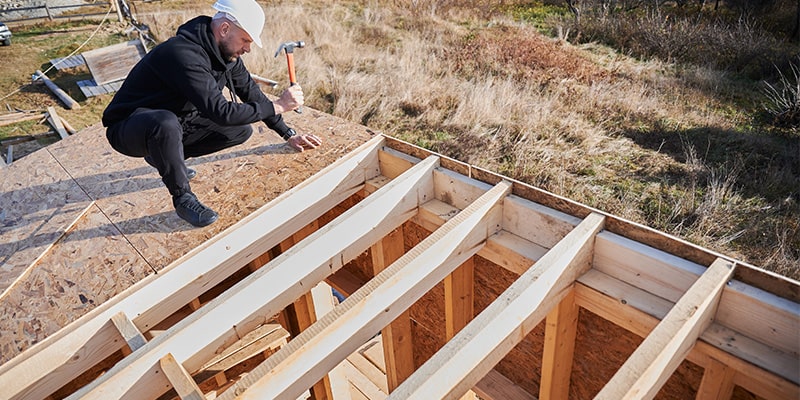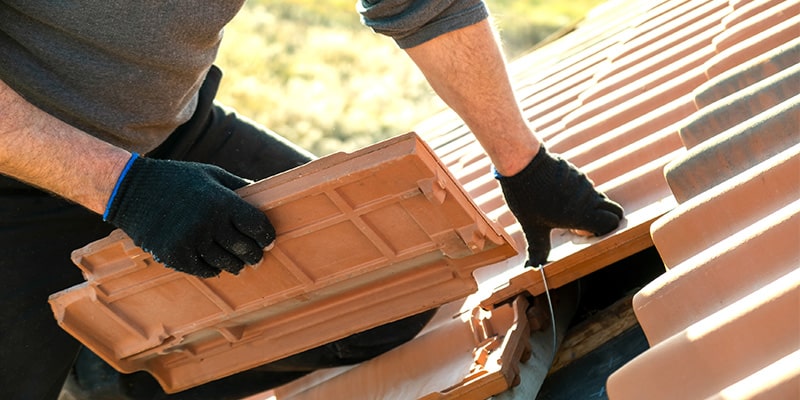What Are the Biggest Problems Faced by Roofers Today (And How to Stay Ahead)?

Our roofs are one of the most vital parts of our homes. They keep us safe and dry, prevent heat from escaping and help to circulate fresh air. It goes without saying then, that the roofing sector is one of our most important as well.
Roofing is and always has been a dangerous job, but these days it's not just the height risk that has to be navigated but a whole host of new problems that have come in the wake of the pandemic. Most notably, the ongoing supply crisis and lack of stock.
The Top 3 Biggest Challenges Facing Roofers
-
Labour Shortage
In a report published last year (Q2 2022), by the NFRC, it was stated that over half of the firms asked were experiencing greater difficulty in finding suitable labour. The highest percentage of respondents being roof slaters and tilers. This considerable lack of workers has bled through to this year with many roofer companies finding it difficult to take on work and complete it on time.
Exasperating this already significant issue is the ageing workforce and the seeming lack of interest in younger people to enter the field. Despite how essential the work is, it is simply unappealing to a vast majority of people.
Solution?
We should start right off the bat by saying that there is no way to protect ourselves from these problems entirely. They are, after all, affecting the entire roofing industry. What you can do, however, is mitigate their damaging effect on your business.
So, how to tackle the lack of skilled labour? Well, there are two routes that others are taking. Either by increasing your direct headcount so you don’t have to rely on sub-contractors which may prove unreliable OR, if you don’t have the time or resources to bolster your onboarding process, by building up a stronger network of sub-contractors you know to be reliable.
Both methods can work, with 17% of firms last year choosing to increase their direct headcount and 12% relying more on sub-contractors. Though, we would recommend the former. In a labour shortage, the most powerful tool you can have is a solid team of loyal workers. How do you achieve this loyalty? Make sure your workers are happy.
This means secluding their work more efficiently around their lives, making training a regular and ongoing process and recognising good work with suitable rewards. It takes a lot of effort and keen administration skills but building a strong team will help you better navigate all problems long term.

-
Extreme Weather Conditions
It may not seem like that all the time, but the fact is the UK has been experiencing a long spat of extreme weather. In the last two decades, we’ve had repeated record heatwaves in summer and increasingly wetter winters. A prediction that the met office made 5 years ago in 2018. Another prediction in the same report, expect the second half of the 21st century to see winter wind speeds also increase.
What all this means from a roofer's perspective is that roofs will not only be more difficult to install but will also need to be maintained more often. Whilst on the surface of it, this may seem like the potential for more work as we’ve seen above there simply aren’t enough people for it. This dramatic uptick in requests is very likely to stress the industry, leading to long delays and, worst case, sub-par work due to increased worker stress.
Solution?
The solution here is hopefully one you are looking to already. Keeping up to date with the most modern roofing materials. As always, manufacturers are looking to improve and, in response to this growing climate threat, that means future-proofing our roofs.
There is a wide array of materials to research and invest in, from green roofs to solar tiles, however, the classic modern material is (and has been for a while) the synthetic or metal tiles and slate. These lightweight alternatives not only offer fantastic lifespans but also tend to fair better when exposed to sunlight.
As older clay and concrete roofs are reaching the end of their lives, it’s a good idea to consider these alternatives when re-roofing and recommend them where you think appropriate. Building a reputation as an expert in installing these types of roofs will also help to bolster future work down the line.
The same can be said for any new technology, including using drones for inspections and remote monitoring. These innovations are not only designed to make your jobs easier but also improve efficiency to make your customers happy.
-
Material Availability
Inevitably, the biggest problem of them all is the lack of stock. Lead times have been at all-time highs since 2019 and those that have seen improvements in availability, have unfortunately seen price rises. Not surprising, considering the natural increase in demand.
In a survey conducted by Klober in 2022, 71% of merchants expressed that availability was the biggest issue they were facing. As a direct result of this, it’s becoming less and less feasible for workers to order their goods on a job-by-job basis. As you’d expect this means more and more are ordering months in advance to prevent delays for their customers.
The big problem with this, however, is that roof tiles are now being chosen not based on quality but simply availability. These tiles will rarely be the best choice for the client and, as we’ve expressed above, can lead to further call back for repairs which only serves to put further pressure on the industry.

Unfortunately, there is no true solution for the shortage other than to wait for supply chains and prices to return to normal. The good news is that we are well on the way to achieving this. Since 2020, the height of these shortages, there have been incremental increases year on year and whilst we are not quite back to 2019 levels, progress is being made.
That’s only a prediction, however. As we have seen the last few years have been unpredictable so it’s best to plan for the worst – expecting prices to stay high for some time to come.
So, what is the best way to mitigate the harm? Well, there are a few things you can do but ultimately the key is success is trying times to keep up strong communication with your suppliers, planning ahead of potential delays by looking into alternative materials and merchants.
Most importantly, you’ll need to be open and honest with your customers. It’s no secret that we’re dealing with price rises and available issues across the board, so it’s better to prepare them for potential delays in advance rather than drop the news on them last minute.
For more advice on new materials or to get a quote for your next project, please don’t hesitate to get in touch with our award-winning customer service team now. Simply call us on 01295 565 565 or talk to us directly using the handy live chat below.